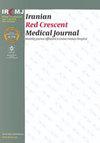肺脂肪栓塞综合征1例报告及文献复习
IF 0.2
4区 医学
Q3 MEDICINE, GENERAL & INTERNAL
引用次数: 0
摘要
背景:脂肪栓塞综合征(FES)是由栓塞的脂肪颗粒阻塞血管和破坏血液供应引起的全身炎症反应引起的,特别是在呼吸微循环中。尽管FES的发病率和死亡率很高,但由于其多种症状,诊断仍然具有挑战性。病例介绍:本文报告了武汉大学中南医院收治的2例肺源性FES患者。这两名患者的诊断是基于他们详细的病史,如吸脂手术史、低氧饱和度、呼吸困难和胸部计算机断层扫描(CT)。两例患者均接受持续吸氧治疗和抗生素治疗。第一位患者接受了额外的抗炎和抗凝治疗。治疗后症状及CT均有改善。他们出院并完全治愈。文献综述:我们从中国国家知识基础设施数据库中获取并分析了1900年1月至2021年7月206例诊断为肺部FES的患者的临床表现、治疗和预后数据。结论:通过对两例病例的分析和文献复习,提示有症状(如呼吸系统症状、神经系统症状、心血管系统症状、皮肤粘膜出血)并有骨折史及其他危险因素的患者应考虑为肺性FES病例。此外,呼吸支持和糖皮质激素治疗可能有效预防肺性FES患者的死亡。本文章由计算机程序翻译,如有差异,请以英文原文为准。
Pulmonary Fat Embolism Syndrome: A Case Report and Literature Review
Background: Fat embolism syndrome (FES) is caused by a systemic inflammatory response arising from embolized fat particles that block blood vessels and disrupt blood supply, particularly in the respiratory microcirculation. Despite its high morbidity and mortality, FES is still challenging to diagnose due to its versatile symptoms.
Case Presentation: In this article, we describe case reports of two patients with pulmonary FES from Zhongnan Hospital of Wuhan University, Wuhan, China. The two patients were diagnosed based on their detailed medical histories, such as a history of liposuction surgery, low oxygen saturation, dyspnea, and chest computed tomography (CT). Both of them received continuous oxygen inhalation therapy and antibiotic treatment. The first patient received additional anti-inflammation and anticoagulation treatment. The symptoms and CT improved after treatments. They were discharged and completely cured.
Literature Review: We obtained and analyzed the clinical manifestations, treatments, and prognosis data of 206 patients diagnosed with pulmonary FES between January 1900 and July 2021 from the China National Knowledge Infrastructure database.
Conclusion: The analysis of our two cases and the literature review suggest that patients with symptoms (such as respiratory system symptoms, nervous system symptoms, cardiovascular system symptoms, and mucocutaneous bleeding) combined with a history of fracture and other risk factors should be considered pulmonary FES cases. Furthermore, respiratory support and glucocorticoid treatment may be effective in preventing the death of pulmonary FES patients.
求助全文
通过发布文献求助,成功后即可免费获取论文全文。
去求助
来源期刊

Iranian Red Crescent Medical Journal
MEDICINE, GENERAL & INTERNAL-
CiteScore
1.16
自引率
0.00%
发文量
0
期刊介绍:
The IRANIAN RED CRESCENT MEDICAL JOURNAL is an international, English language, peer-reviewed journal dealing with general Medicine and Surgery, Disaster Medicine and Health Policy. It is an official Journal of the Iranian Hospital Dubai and is published monthly. The Iranian Red Crescent Medical Journal aims at publishing the high quality materials, both clinical and scientific, on all aspects of Medicine and Surgery
 求助内容:
求助内容: 应助结果提醒方式:
应助结果提醒方式:


